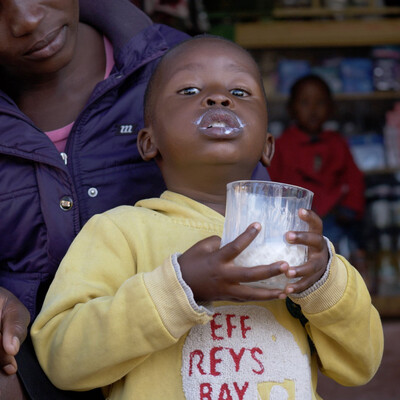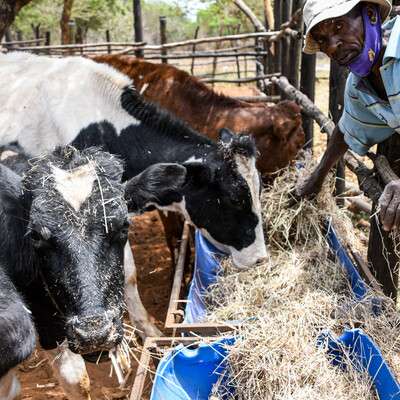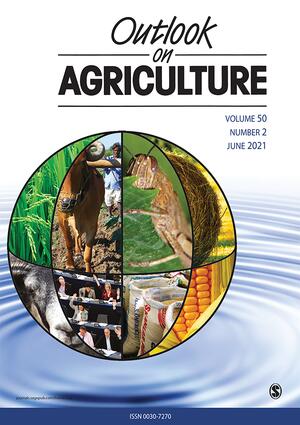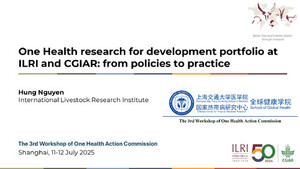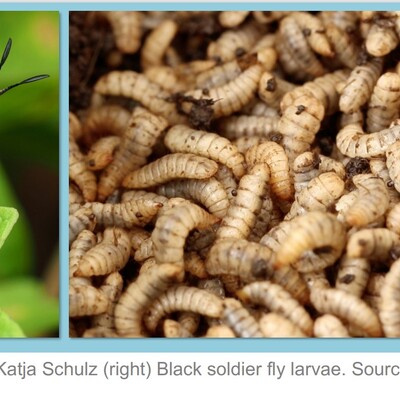
Partners assess progress in implementing the Tanzania livestock master plan
In recent years the development of Tanzania’s livestock sector is receiving increased attention, due to its immense potential to improve livelihoods. Key strategies for development include the Tanzania livestock master plan (TLMP, 2017/2018 – 2021/2022), which is guided by a longer-term livestock sector analysis (LSA, 2016/2017 - 2031/2023).
Both documents were developed using the Livestock Sector Investment and Policy Toolkit (LSIPT) for a national herd and economic sector model. They set out the investment interventions that could help meet the Agricultural Sector Development Program Phase II (ASDP II) targets by improving productivity in the key livestock value chains for poultry, pork, red meat and milk. The same criteria to assess the investment interventions are outlined in Tanzania’s national development objectives to reduce poverty, achieve food security, and contribute to economic growth, exports, industrialization and employment generation.
The recently-ended initial five-year TLMP was a collaborative development plan between the government, the private sector and non-governmental organizations to identify and strengthen priority livestock value chains and production systems. Its goal was to translate the national livestock sector’s priorities into realistic and achievable time-bound targets and objectives while guiding the sector’s investment decisions.
To assess progress towards these objectives, the Ministry of Livestock and Fisheries (MLF) hosted about 50 stakeholders from the sector in Dodoma on 21 July 2022. Besides senior MLF staff, participants included representatives of the private sector, development partners, the civil society and the media.
In his opening address, Livestock and Fisheries minister, Mashimba Ndaki, urged the stakeholders to critically discuss what to improve in future strategies and plans: ‘The lack of a specific plans in the livestock sector prior to 2017 slowed down investment and development of the livestock sector. The sector can help to strengthen national development by creating jobs and bringing foreign investment into Tanzania.’
Ndaki pointed out the following recent reforms towards a more enabling business environment and public sector investments:
• adjustment of meat export levies;
• removal of value-added tax on milk cooling tanks and transportation-related equipment;
• reductionof the export-related radiation taxes;
• removal of customs fees on milk packaging, which helped local milk processors produce more dairy products and grow their businesses;
• launch of an electronic government system for the issuance of permits and licences for livestock traders inside and outside the country; and
• strengthening of the electronic system to identify and register livestock.
While speaking on behalf of the researchers and development partners, Amos Omore, the International Livestock Research Institute (ILRI) country representative, noted that extension services play a key role in enhancing productivity and the income of livestock keepers. He highlighted the findings from a recent census conducted by the Tanzania National Bureau of Statistics, which shows a dramatic decline in access and use of extension services by livestock keepers, from 55% in 2008 to 20% in 2013 and 9% in 2020. He added that an analysis of the 2013 census indicated that the 20% of livestock keepers who accessed and used extension services earned three times the income of those who did not.
‘We look forward to continued collaboration with MLF and other stakeholders to apply lessons on TLMP implementation and other areas and thus contribute to further development of the livestock sector in Tanzania,’ Omore affirmed.
Charles Mhina, acting MLF permanent secretary, emphasized the need for feedback from stakeholders to establish a common understanding of the priorities in the livestock sector and how to implement them. Other participants proffered various recommendations to enhance implementation of future strategies in the sector, the main ones being the need to strengthen monitoring and evaluation and to attract more public and private sector investments.
The meeting was also used to launch the Livestock Sector Transformation Plan (LSTP) developed by MLF to further improve livestock productivity. This document applies cost-benefit analyses of investments in public institutions supporting the development of the livestock sector in Tanzania over the next five years.
Acknowledgements
The TLMP was funded by the financial support from Bill & Melinda Gates Foundation (BMGF), implemented by the Government of Tanzania under the Ministry of Livestock and Fisheries with technical support from International Livestock Research Institute (ILRI), in collaboration with the Dalberg Group and local, private and public livestock stakeholders.
Photo: Tanzania minister for Livestock and Fisheries (centre) poses for a group photo with the research and development partners in the livestock sector (credit: IITA/Gloriana Ndibalema).






